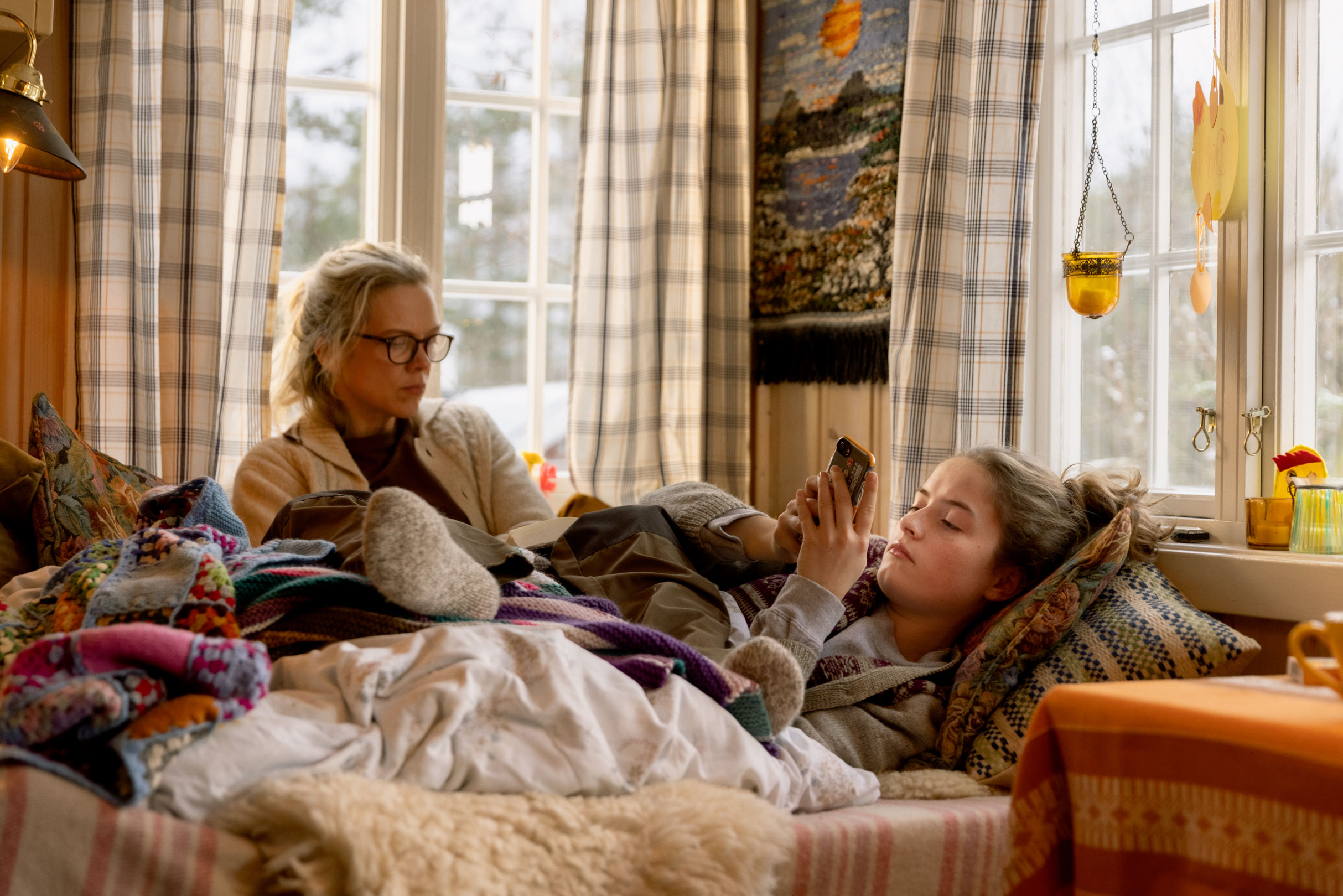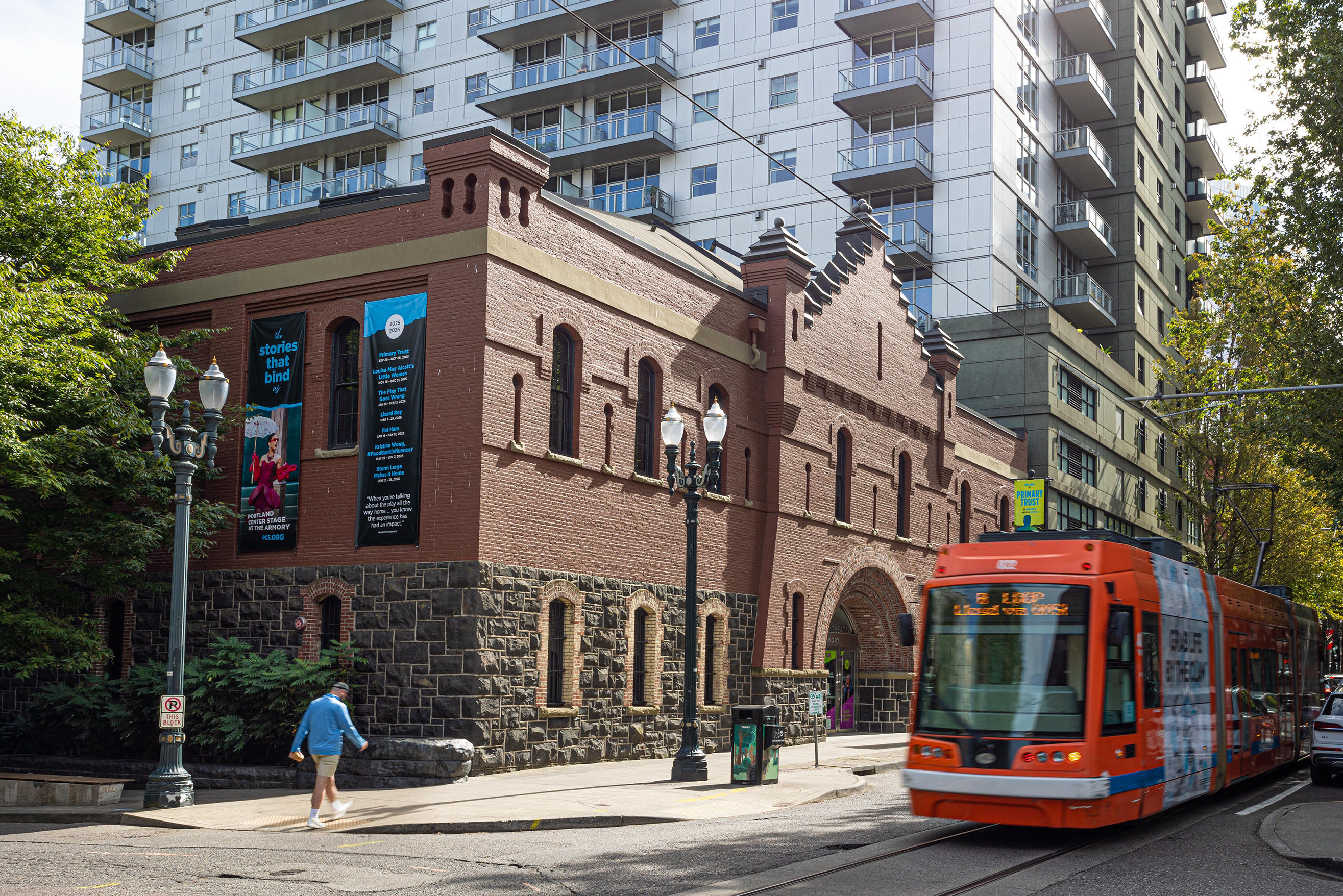Old Moody Stages Brings the Performing Arts to Portland's South Waterfront
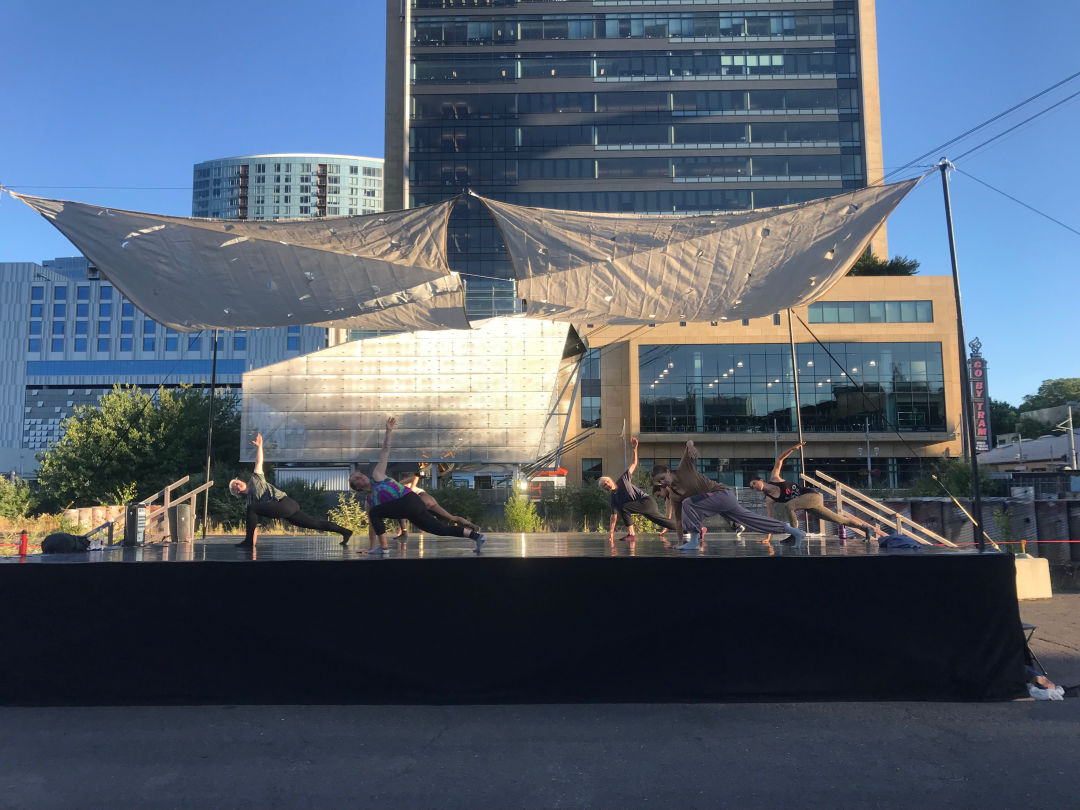
The outdoor portion of Old Moody Stages
Image: Courtesy Emily Running
Ever since Portland started peeking through the post-pandemic curtains, the South Waterfront has emerged as rich soil for new cultural hubs. The Lot at Zidell Yards, a combo drive-in movie/outdoor music venue, has been the summer’s de facto hotspot, hosting NW Film Center and Hollywood Theatre drive-ins, shows by acts like Ural Thomas and Y La Bamba, and soon, a music festival.
Earlier this month, a coalition of arts orgs—Profile Theatre, the Portland Opera, Portland State University's School of Music and Theater, and Dance Wire—announced the launch of a new, performance-focused South Waterfront project called Old Moody Stages. Named for the SW Moody Avenue space where Zidell Companies built ships for much of the 20th and 21st century, Old Moody Stages will feature a month of music, theater, and dance performances, from July 30–August 29. (Dance Wire held a series of classes on the grounds from July 21–24, as a soft kickoff.)
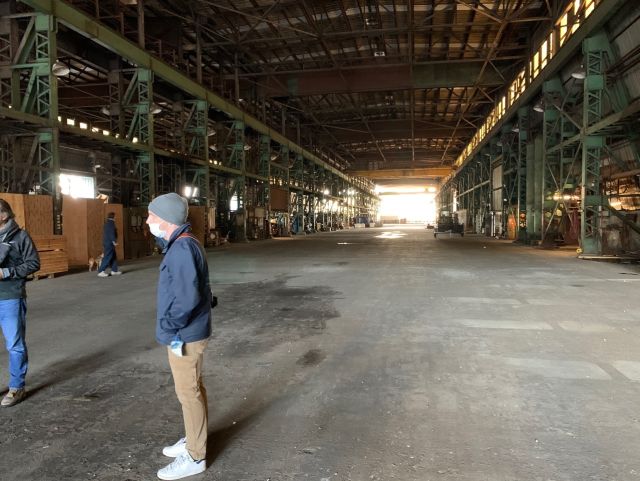
An interior shot of the Barge Building
Image: Courtesy Josh HEcht
Philanthropist Charlene Zidell approached the organizations at the end of 2020, when the future of performance looked particularly bleak, with hopes to activate the site as some sort of socially distant venue. "Charlene has had a vision for arts in the South Waterfront for as long as I've known her," says Profile Theatre's artistic director Josh Hecht, and this was its latest iteration. After regular winter meetings, an outline for Old Moody Stages emerged: the Barge Building (also known as the Old Moody Building) could house an indoor stage in its cavernous, open-ended 72,000 square-foot expanse. The group could erect a supplementary outdoor stage, and utilize some of the surrounding 33 acres for various other site-specific pursuits.
As exciting as it all sounds, it almost didn't happen. The group approached various foundations and sponsors in search of funding throughout the winter, and for months, received rejection after rejection. By the spring, the project was in real danger. At the last moment, though, money came through, and the group received a green light to move forward at the end of May. They publicly announced the project on July 7, and started loading in equipment a few days later.
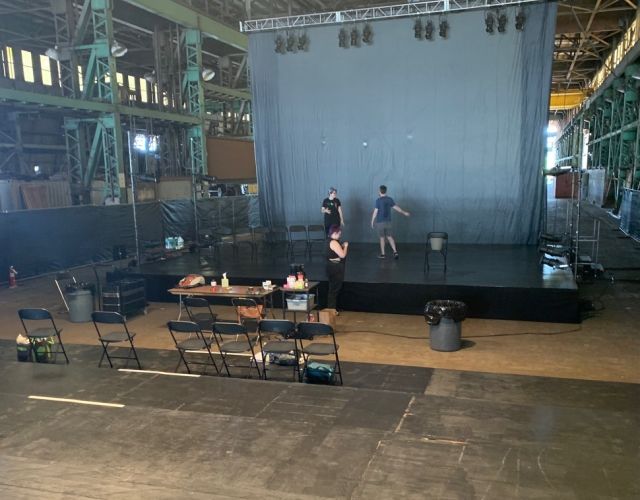
The mostly completed indoor stage
Image: Courtesy Josh HEcht
“We all knew the vision was very solid, but it was quite a rollercoaster," says Emily Running, founder of "dance hub" Dance Wire. "The funding did come through in the end, but it’s really important for the world to know—for Portlanders to know—that we have to invest in our arts to keep them here and keep them alive. As resilient as arts organizations are, we need money, we need investment, we need all of that to survive, just like any other business.”
Right now, two stages stand at the site: a four-foot tall tented outdoor stage where the Portland Opera and Dance Wire will perform, and a two-foot tall indoor stage where Profile, the Lark Opera, and dance company push/FOLD will perform, with a sound and lightning system, plus six rows of seats, on risers. On August 5, Profile will start previews for The Oldest Profession, a Paula Vogel play about aging sex workers in Manhattan's pre-gentrified Upper West Side. (The industrial space, Hecht says, is a strong match for the material.) Dance Wire, which works with 10 dance ambassadors of various disciplines each year, will present a showcase featuring work from each ambassador on August 25.
While four orgs appear on Old Moody's masthead, its construction was a true all-hands-on-deck collaboration across Portland's creative communities: The physical stages came from the Portland Opera. The lights came from Portland State University. The marley (a slip-resistant vinyl used on dance floors) came from BodyVox. The chairs are from PICA. Oregon Children’s Theatre provided sound equipment and pipe-and-drape. “One of the silver linings of this pandemic, period, is that it’s forced a lot of resource pooling and imagination,” Hecht says, “and I, for one, hope that that continues.”
As for the future of Old Moody Stages itself, it's strictly a summer thing. “At the end of August, those materials will go back to their source organizations, and the space will turn back from a chariot into a pumpkin," Hecht says. But that's not to say the project is the last of its kind. "Knowing Charlene," Running adds, "More things will happen in the future."
Check out the full schedule of Old Moody Stages performances here.
